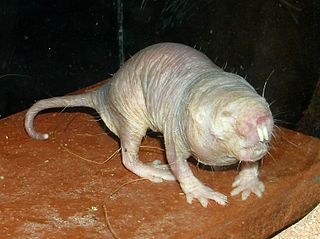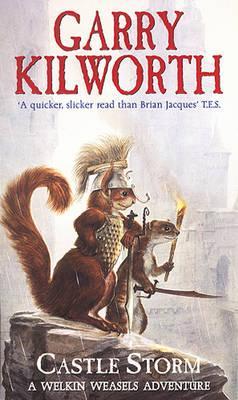
Bigfoot, also commonly referred to as Sasquatch, is a purported ape-like creature said to inhabit the forests of North America. Many dubious articles have been offered in attempts to prove the existence of Bigfoot, including anecdotal claims of visual observations as well as alleged video and audio recordings, photographs, and casts of large footprints. Some are known or admitted hoaxes. Tales of wild, hairy humanoids exist throughout the world, and such creatures appear in the folklore of North America, including the mythologies of indigenous people. Bigfoot is an icon within the fringe subculture of cryptozoology, and an enduring element of popular culture.

The Loch Ness Monster, affectionately known as Nessie, is a creature in Scottish folklore that is said to inhabit Loch Ness in the Scottish Highlands. It is often described as large, long-necked, and with one or more humps protruding from the water. Popular interest and belief in the creature has varied since it was brought to worldwide attention in 1933. Evidence of its existence is anecdotal, with a number of disputed photographs and sonar readings.

The unicorn is a legendary creature that has been described since antiquity as a beast with a single large, pointed, spiraling horn projecting from its forehead.

The narwhal, also known as a narwhale, is a medium-sized toothed whale that possesses a large "tusk" from a protruding canine tooth. It lives year-round in the Arctic waters around Greenland, Canada and Russia. It is one of two living species of whale in the family Monodontidae, along with the beluga whale. The narwhal males are distinguished by a long, straight, helical tusk, which is an elongated upper left canine. The narwhal was one of many species described by Carl Linnaeus in his publication Systema Naturae in 1758.

The shipworms are marine bivalve molluscs in the family Teredinidae: a group of saltwater clams with long, soft, naked bodies. They are notorious for boring into wood that is immersed in sea water, including such structures as wooden piers, docks and ships; they drill passages by means of a pair of very small shells borne at one end, with which they rasp their way through. Sometimes called "termites of the sea", they also are known as "Teredo worms" or simply Teredo, from Ancient Greek: τερηδών, romanized: terēdṓn, lit. 'wood-worm' via Latin. Eventually biologists adopted the common name Teredo as the name for the best-known genus.
Joey Skaggs is an American prankster who has organized numerous successful media pranks, hoaxes, and other presentations. Skaggs is one of the originators of the phenomenon known as culture jamming. Skaggs has used Kim Yung Soo, Joe Bones, Joseph Bonuso, Giuseppe Scaggioli, Dr. Joseph Gregor, and the Rev. Anthony Joseph as aliases.

In American folklore, the hodag is a fearsome critter resembling a large bull-horned carnivore with a row of thick curved spines down its back. The hodag was said to be born from the ashes of cremated oxen, as the incarnation of the accumulation of abuse the animals had suffered at the hands of their masters. The history of the hodag is strongly tied to the City of Rhinelander where it was claimed to have been discovered. The hodag has figured prominently in early Paul Bunyan stories.
Cadborosaurus, nicknamed Caddy by journalist Archie Wills, is a sea serpent in the folklore of regions of the Pacific Coast of North America. Its name is derived from Cadboro Bay in Greater Victoria, British Columbia, and the Greek root word "saurus" meaning lizard or reptile.

Shanidar Cave is an archaeological site located on Bradost Mountain, within the Zagros Mountains, in the Erbil Governorate of Kurdistan Region in northern Iraq. It is known for the discovery of Neanderthal remains at the site most notably Shanidar 1, who survived several injuries during his life, possibly due to care from others in his group, and Shanidar 4, the famed 'flower burial'. Until this discovery, Cro-Magnons, the earliest known H. sapiens in Europe, were the only individuals known for purposeful, ritualistic burials.

Rhinogradentia is a fictitious order of shrew-like mammals invented by German zoologist Gerolf Steiner. Members of the order, known as rhinogrades or snouters, are characterized by a nose-like feature called a "nasorium", which evolved to fulfill a wide variety of functions in different species. Steiner also created a fictional persona, naturalist Harald Stümpke, who is credited as author of the 1961 book Bau und Leben der Rhinogradentia. According to Steiner, it is the only remaining record of the animals, which were wiped out, along with all the world's Rhinogradentia researchers, when the small Pacific archipelago they inhabited sank into the ocean due to nearby atomic bomb testing.

The naked mole-rat, also known as the sand puppy, is a burrowing rodent native to parts of East Africa. It is closely related to the blesmols and is the only species in the genus Heterocephalus of the family Heterocephalidae. The naked mole-rat exhibits a highly unusual set of physical and behavioral traits that allow it to thrive in a harsh underground environment, most notably being the only mammalian thermoconformer with an almost entirely ectothermic (cold-blooded) form of body temperature regulation, as well as exhibiting a complex social structure split between reproductive and non-reproductive castes, making it and the closely-related Damaraland mole-rat the only widely agreed upon examples of eusociality in mammals.
The Minnesota Iceman is a sideshow exhibit and elaborate hoax that depicts a fake man-like creature frozen in a block of ice. It was displayed at shopping malls, state fairs, and carnivals in the United States and Canada in the 1960s and early 1970s and promoted as the "missing link" between man and Neanderthals. It was sold on eBay in 2013 and put on display in Austin, Texas.

Rufus is a fictional character in the American animated television series Kim Possible (2002–2007) and its 2019 live-action film adaptation. Voiced by actress Nancy Cartwright, Rufus is a pet naked mole-rat owned by Ron Stoppable – Kim Possible's best friend and sidekick – and first appears in the show's pilot episode "Crush", which premiered on June 7, 2002. Residing and traveling in his owner's pocket, Rufus accompanies Kim and Ron on missions to protect the world from evildoers, at times proving beneficial to their success.

A Year With Frog and Toad is a musical written by brothers Robert (music) and Willie Reale, based on the Frog and Toad children's stories written and illustrated by Arnold Lobel. The musical follows the woodland adventures of two amphibious friends, a worrywart toad and a perky frog, with their assorted colorful hopping, crawling and flying companions, over the course of a year. The show broke new ground by bringing professional children's theatre to Broadway, sparking the interest of the age 3-to-10 set.

La Cotte de St Brelade is a Paleolithic site of early habitation in Saint Brélade, Jersey. Cotte means "cave" in Jèrriais. The cave is also known as Lé Creux ès Fées.

April Fools' Day or April Fool's Day is an annual custom on 1 April consisting of practical jokes and hoaxes. Jokesters often expose their actions by shouting "April Fools!" at the recipient. Mass media can be involved in these pranks, which may be revealed as such the following day. The custom of setting aside a day for playing harmless pranks upon one's neighbour has been relatively common in the world historically.

The woolly mammoth was a species of mammoth that lived during the Pleistocene until its extinction in the Holocene epoch. It was one of the last in a line of mammoth species, beginning with Mammuthus subplanifrons in the early Pliocene. The woolly mammoth began to diverge from the steppe mammoth about 800,000 years ago in East Asia. Its closest extant relative is the Asian elephant. DNA studies show that the Columbian mammoth was a hybrid between woolly mammoths and another lineage descended from steppe mammoths. The appearance and behaviour of this species are among the best studied of any prehistoric animal because of the discovery of frozen carcasses in Siberia and Alaska, as well as skeletons, teeth, stomach contents, dung, and depiction from life in prehistoric cave paintings. Mammoth remains had long been known in Asia before they became known to Europeans in the 17th century. The origin of these remains was long a matter of debate, and often explained as being remains of legendary creatures. The mammoth was identified as an extinct species of elephant by Georges Cuvier in 1796.

Castle Storm is the second novel in the Welkin Weasels series by Garry Kilworth. Picking up shortly after the end of Thunder Oak, the novel centres on the anthropomorphised weasels searching for the humans that mysteriously vanished from their homeland many years before. Following a clue found in the first book, the weasels, led by the outlaw Sylver and pursued by the stoat Sheriff Falshed, journey to a far-away city where they find themselves entangled in a battle between rivalling clans of squirrels. Published in Germany under the title "Belagert die Sturmburg."
The drop bear is a hoax in contemporary Australian folklore featuring a predatory, carnivorous version of the koala. This imaginary animal is commonly spoken about in tall tales designed to scare tourists. While koalas are typically docile herbivores, drop bears are described as unusually large and vicious marsupials that inhabit treetops and attack unsuspecting people that walk beneath them by dropping onto their heads from above.















